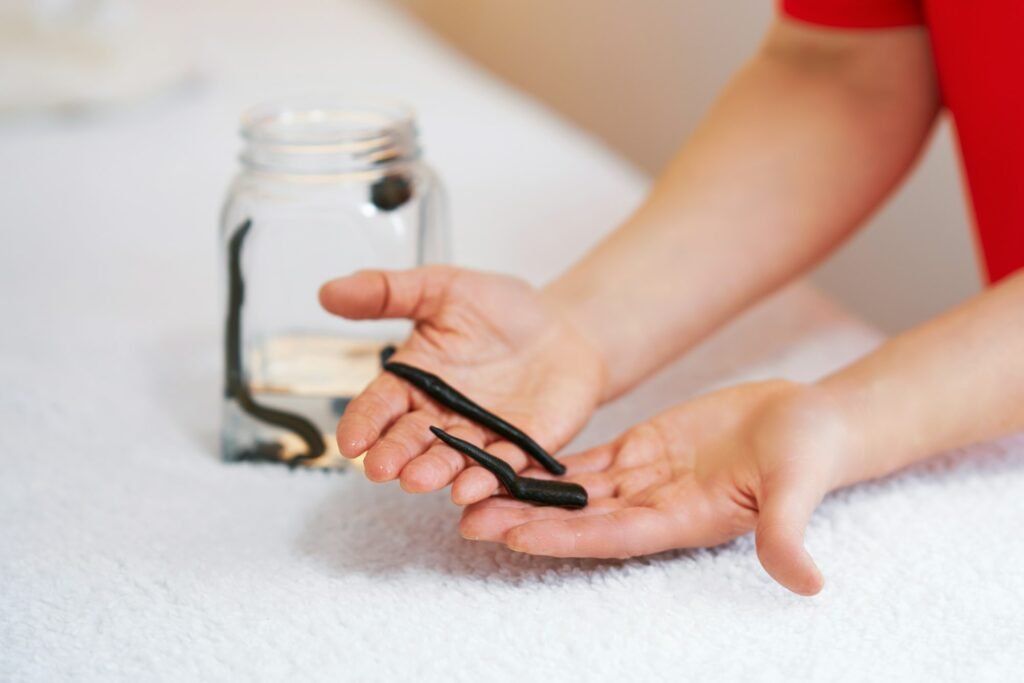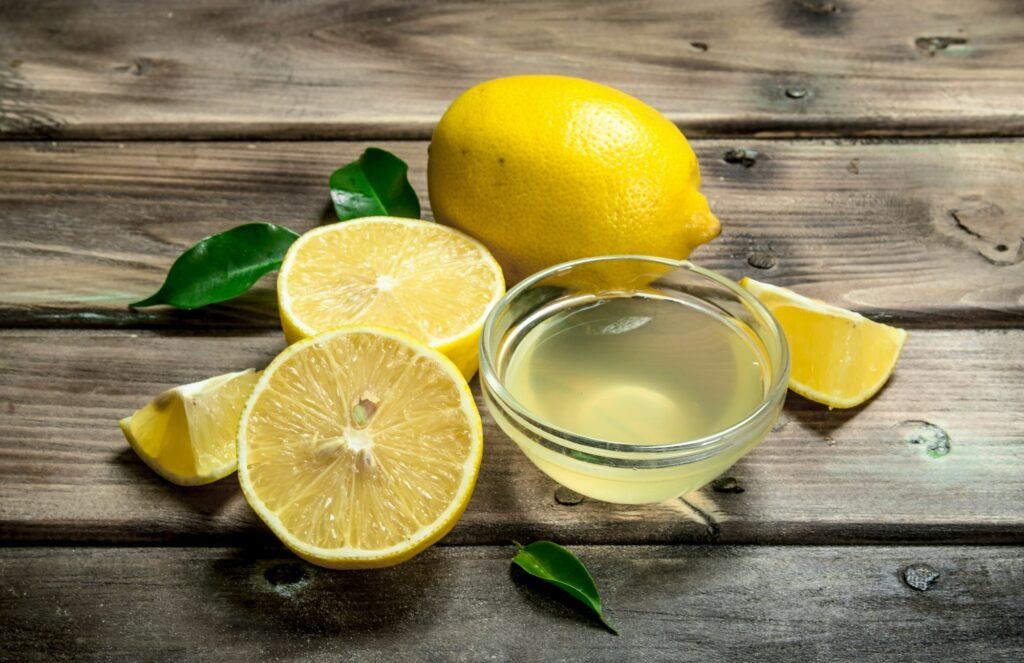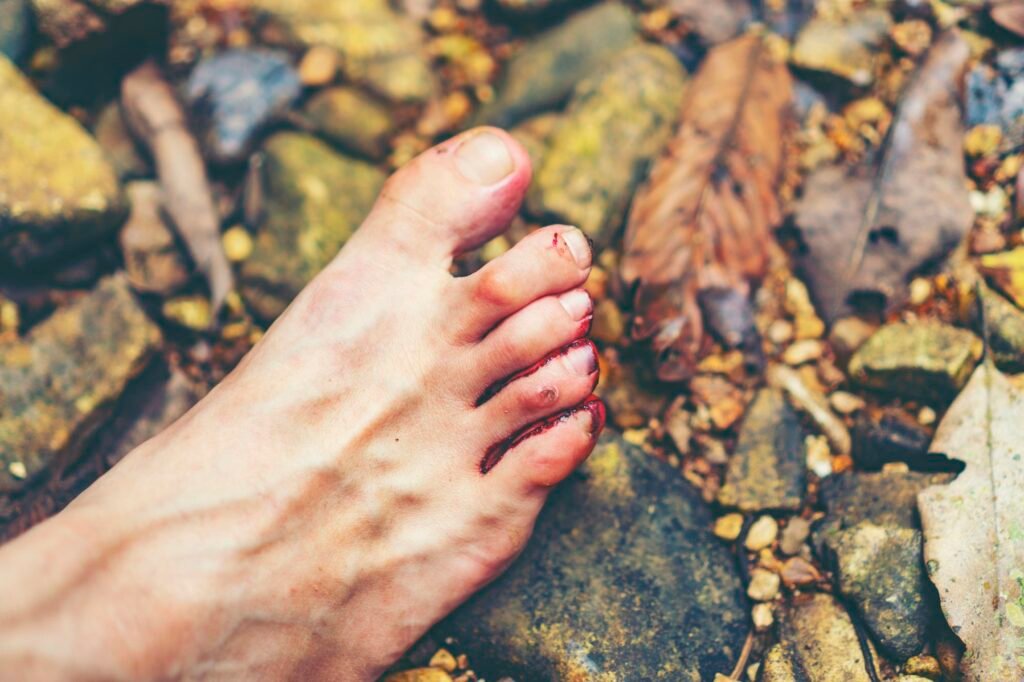Are you tired of dealing with leeches and want to know how to get them off quickly and effectively?
Well, in this article, we will guide you through the process of understanding leech behavior, identifying different types of leeches, and preparing for their removal. We’ll show you techniques like using salt or applying heat to detach them, as well as utilizing lemon juice or a leech removal tool.
So, finally, its time to say goodbye to those pesky bloodsuckers with our expert tips!
Understanding Leech Behavior
Understanding leech behavior can help you effectively remove them from your skin.
By studying leech feeding habits and their anatomy, you can develop strategies to prevent and deal with leech bites.
Leeches are blood-sucking parasites that attach themselves to the skin of humans and animals.

They have a preference for moist areas, such as lakes, rivers, and marshes. Leeches use their suction cups to latch onto the host’s skin and then secrete an anticoagulant substance to prevent blood clotting.
This allows them to feed on the host’s blood for an extended period of time without interruption.
To remove a leech safely, it is important not to panic or forcibly pull it off, as this can cause the mouthparts to remain in your skin. Instead, gently apply salt or heat near the leech’s mouth and wait for it to detach itself naturally before disposing of it properly.
Identifying Different Types of Leeches
Spotting different types of leeches can be challenging, but you’ll easily identify them by their distinct colors and patterns.
Leech anatomy varies slightly depending on the species, but they all have a similar body structure. They typically have a long, cylindrical shape with a flattened underside and suckers at both ends.
These suckers help them attach to their hosts or surfaces in their habitat. Speaking of habitat, leeches can be found in various environments, such as freshwater lakes, ponds, swamps, and even moist soil.
Some species prefer shallow waters while others thrive in deeper areas. It’s important to note that not all leeches are bloodsuckers; some feed on other organisms like insects or small aquatic animals.
By understanding their anatomy and habitat preferences, you’ll be better equipped to identify different types of leeches when you encounter them.
Preparing for Leech Removal
When it comes to preparing for leech removal, you’ll want to gather some essential tools like tweezers and antiseptic solution.
- Dealmed Suture Removal Kit (50 Kits): Made of the highest quality materials, this sterile suture removal kit includes all the necessary accessories needed to effectively remove stitches. It is practical and easy to use.
Prices pulled from the Amazon Product Advertising API on:
Product prices and availability are accurate as of the date/time indicated and are subject to change. Any price and availability information displayed on [relevant Amazon Site(s), as applicable] at the time of purchase will apply to the purchase of this product.
These tools will help you safely remove the leech and prevent any potential infections. Before attempting removal, make sure to wash your hands thoroughly with soap and water. Then, disinfect the area around the leech bite using the antiseptic solution. This will minimize the risk of infection.
Remember to be gentle during the removal process to avoid any injuries or further complications.
Using Salt to Remove Leeches
To safely remove leeches, you can try applying a mixture of salt and water directly on the affected area. This method is effective because the salt causes the leech to release its grip and detach from your skin. Here is a table comparing using salt for leech removal to alternative methods:
| Using Salt for Leech Removal | Alternatives to Salt for Leech Removal |
|---|---|
| Salt is easily accessible | Lemon juice |
| Inexpensive | Vinegar |
| Can be found in most homes | Tobacco |
| Works quickly | Soap and water |
| Minimal risk of infection | Alcohol |
While using salt is a popular and effective way to remove leeches, there are also alternatives available if you don’t have salt on hand. Lemon juice, vinegar, tobacco, soap and water, or alcohol can all be used as substitutes. It’s important to choose a method that works best for you and ensures safe removal of the leech.
Applying Heat to Detach Leeches
If you’re dealing with leeches, one option is to apply heat to the affected area in order to detach them.
While it may seem counterintuitive, applying heat can help loosen the leech’s grip and make it easier to remove. You can use a hot compress or a warm object like a spoon that has been heated up. Simply place the heat source on the leech for a few seconds and then quickly pull it away.
The sudden change in temperature will cause the leech to release its hold and detach from your skin.
It’s important to note that this method may not work for all types of leeches, so if you’re unsure or uncomfortable using heat, there are other natural remedies available such as applying cold to detach leeches.
Using Vinegar to Safely Remove Leeches
Using vinegar is also an effective and safe way to remove leeches from your skin. When you find a leech attached to you, it’s important to act quickly to prevent infection. Leeches can transmit bacteria into the wound, increasing the risk of infection.
By applying vinegar directly on the leech, it releases its grip and detaches from your skin easily. The acidity of vinegar irritates the leech, causing it to let go without leaving any body parts behind.
This method is especially useful if you don’t have access to specialized tools or medical assistance. While there are alternative removal methods like salt or heat, using vinegar is a reliable option that minimizes the risk of infection and ensures a safe removal process.
Utilizing Lemon Juice for Leech Removal
Now that you know how vinegar can help remove leeches safely, let’s explore another natural remedy: lemon juice.

Besides being a tasty addition to your water or recipes, lemon juice has some surprising benefits when it comes to dealing with leeches. The acidic nature of lemon juice makes it an effective repellent against these bloodsucking creatures. By applying lemon juice directly on your skin or mixing it with water and spraying the solution around the affected area, you create an environment that leeches dislike.
They will be deterred by the sour scent and taste of the lemon juice, keeping them away from you. So next time you venture into leech-infested areas, don’t forget to pack some lemon juice as one of your natural leech repellents!
Employing a Leech Removal Tool
To effectively remove leeches from your skin, you’ll want to employ a leech removal tool. These tools are specifically designed to safely detach leeches without causing harm or leaving any body parts behind. Here are four reasons why using a leech removal tool is beneficial:
- Ease of use: The tool is user-friendly and requires minimal effort to operate.
- Precision: The tool allows for precise control, ensuring that the entire leech is removed.
- Safety: Using a proper tool reduces the risk of infection or further injury during the removal process.
- Reusability: Most leech removal tools are reusable, making them cost-effective and environmentally friendly.
While there are natural remedies for leeches, such as applying salt or heat, utilizing a dedicated removal tool is often the most effective and efficient method for safely getting rid of these bloodsucking creatures from your skin.
Seeking Medical Assistance for Leech Removal
If you’ve found yourself with a leech attached to your skin, it’s important to consider seeking professional leech removal. While attempting to remove the leech on your own may seem like a quick solution, there are risks involved that should not be taken lightly.
The expertise of medical professionals is crucial in ensuring safe and effective removal while minimizing the chances of complications.
Professional Leech Removal
There’s a reason why it’s recommended to seek professional help when dealing with leech removal. While natural leech removal methods may seem tempting, they can often be ineffective and even dangerous. Here are three reasons why professional leech treatment is the best option:
- Expertise: Professionals have the knowledge and experience to safely remove leeches without causing harm or further complications.
- Specialized Tools: They have access to specialized tools that make the process more efficient and less painful for you.
- Prevention of Infection: Professionals ensure that all necessary precautions are taken to minimize the risk of infection during and after the removal process.
Risks of Self-Removal
Removing leeches by yourself can be risky without the proper knowledge and tools. There are several risks associated with DIY removal that you should be aware of.

First, if you don’t remove the leech properly, you run the risk of leaving parts of it behind in your skin, which can lead to infection. Additionally, if you try to pull off a leech forcefully, it may regurgitate its stomach contents into your wound, increasing the risk of infection even further.
Another consequence of leaving leeches attached is that they can continue feeding on your blood for an extended period of time.
This can result in excessive blood loss and weakness. It’s important to seek professional help or use appropriate techniques and tools when removing leeches to avoid these risks and ensure your safety.
Preventing Future Leech Encounters
To prevent future leech encounters, you should wear protective clothing and avoid swimming in areas known to have high leech populations. Leeches are attracted to warmth and movement, so wearing long pants, socks, and closed-toe shoes can provide a physical barrier against them. Additionally, using natural leech repellents can help deter these blood-sucking parasites. Here are some effective options:
- Apply essential oils such as lemon eucalyptus or citronella on exposed skin.
- Use garlic-infused oil or vinegar as a topical repellent.
- Wear light-colored clothing that makes it easier to spot and remove any attached leeches.
Frequently Asked Questions
Can Leeches Transmit Diseases to Humans?
Leeches can transmit diseases to humans. However, they also have a role in traditional medicine and can provide potential benefits in modern therapy. But first, let’s discuss the risks of leech transmission.
Are All Types of Leeches Dangerous to Humans?
Not all types of leeches are dangerous to humans. Some species are harmless and do not transmit diseases. However, it’s important to be cautious when encountering leeches in their habitats.
How Long Does It Usually Take for a Leech to Detach on Its Own?
On average, a leech will detach on its own within 20 minutes to an hour. If you want to speed up the process, you can use methods like applying salt or gently pulling it off with tweezers.
Can Leeches Cause Any Long-Term Effects or Complications?
Leeches can potentially cause long-term effects and complications. It is important to be aware of the risks associated with leech bites, such as infection or allergic reactions, and seek medical attention if necessary.
What Should I Do if I Accidentally Swallow a Leech?
If you accidentally swallow a leech, it’s important to stay calm. Seek immediate medical attention or call emergency services. They will provide the necessary guidance and treatment to ensure your safety.
Conclusion
In conclusion, getting leeches off can be a daunting task, but with the right knowledge and tools, it is possible to remove them safely. By understanding leech behavior and identifying different types of leeches, you can better prepare for removal. Whether you choose to use salt, heat, lemon juice, or a specialized removal tool, make sure to take necessary precautions and seek medical assistance if needed. Remember to also take steps to prevent future leech encounters by avoiding their habitats and wearing protective clothing when necessary.


